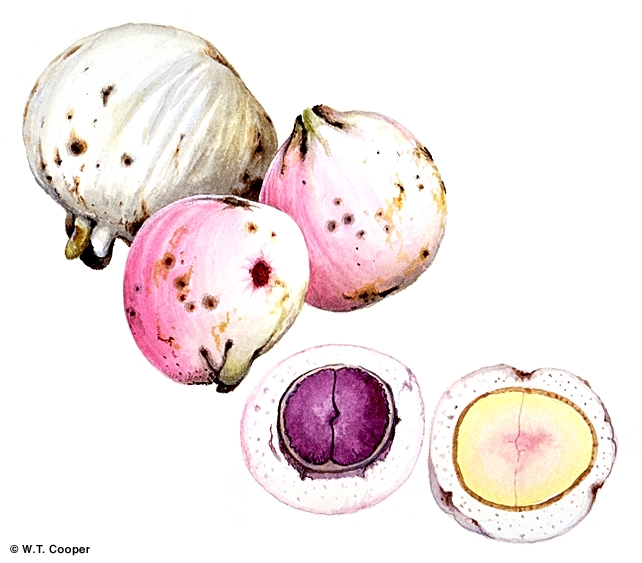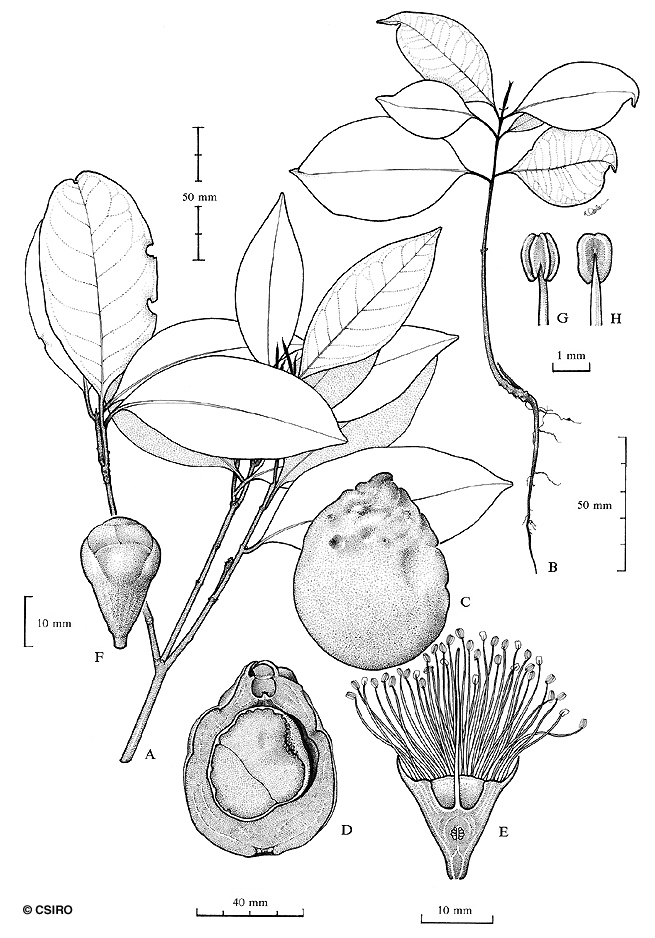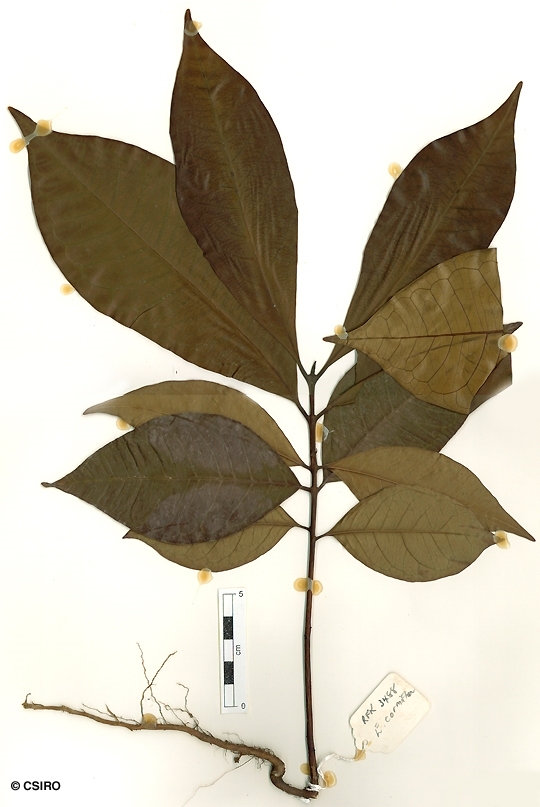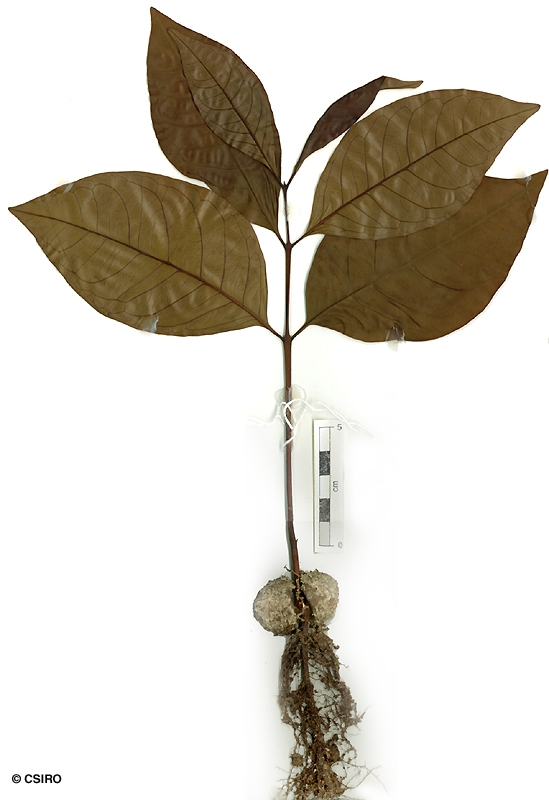Australian Tropical Rainforest Plants - Online edition
Syzygium cormiflorum (F.Muell.) B.Hyland







Hyland, B.P.M. (1983) Australian Journal of Botany Supplementary Series 9: 68.
White Apple; Apple, White; Apple, Wild; Wild Apple; Watergum; Satinash, Bumpy; Ramiflorus Satinash; Cairns Satinash; Bumpy Satinash
Stem variable, bumpy on the cauliflorous form but +/- normal on the ramiflorous form.
Bracts deciduous, absent at anthesis. Flowers sessile or shortly pedicellate, calyx tube (hypanthium) + pedicel about 7-15 mm long, calyx tube (hypanthium) about 9-16 mm diam., calyx lobes rounded, dimorphic, concave, inner lobes larger, about 6-11 mm long. Petals clawed, concave, about 8-15 mm diam., oil dots numerous, generally more than 100 per petal, sometimes difficult to distinguish. Outer staminal filaments about 15-30 mm long, anthers about 1.1-2.3 x 0.6-1.4 mm, gland absent or not visible. Ovules about 15-30 per locule, placentas central, ovules radiating, ascending. Style about 18-35 mm long, approximating the stamens.
Fruit borne on the trunk and larger branches; globular to ovoid, often somewhat irregular, about 30-60 mm diam., calyx lobes persistent, about 5-9 mm long. Seed solitary, rarely two, attaining about 25-32 mm diam., testa adhering slightly to the succulent pericarp but adhering much more strongly to the rugose surface of the cotyledons by peg-like intrusions from the testa. Cotyledons uniformly textured except for the peripheral layer. Radicle central-lateral.
Fruit and flowers eaten by Cassowaries. Cooper & Cooper (1994).
This tree is cultivated for the mass flowering that occurs on the trunk and sometimes the lower branches. The large flowers attract several bird and bat species and are followed by large cream or pinkish fruits.
Wood specific gravity 0.77-0.95. Hyland (1983).





